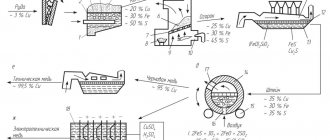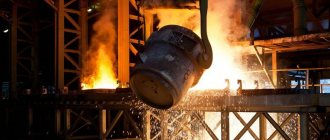GeoBar - Geographical directory
The material Factors of production location Table presents the main factors of enterprise location, explanations and examples.
| Factor | Explanation | Examples |
| Military strategic | Placement of enterprises taking into account the interests of state security. Production of military-strategic products | It is implemented in locating enterprises both far from borders and directly near state borders |
| Energy | Large energy costs per unit of production | The most energy-intensive industries: aluminum and titanium-magnesium industry; copper production; production of polymer materials and chemistry of organic synthesis; pulp and paper industry |
| Transport | The presence of developed transport routes connecting areas of raw material extraction with areas of its processing, areas of production of goods with areas of their consumption; as well as the presence of routes connecting related enterprises | The transport factor is important for the development of the gas industry and ferrous metallurgy; The location of mechanical engineering enterprises is focused on large transport hubs |
| Consumer | Orientation of enterprises to meet the needs of the economy and the population (food industry, light industry, furniture production, household appliances, thermal power plants - in large cities). Typically, consumer-oriented industries are those that produce perishable or non-transportable products, as well as goods and equipment necessary for the development of industries specializing in a given area and the livelihoods of its population. | Food, light, furniture industries, thermal power plants. Production of agricultural machinery, mineral fertilizers in areas with a developed agro-industrial complex; mining equipment - in mining areas; skidding tractors - in logging areas; ships - in river and sea ports; metals (steel, rolled products) - at large machine-building enterprises |
| Natural conditions (climate, terrain features) | The presence of certain natural conditions (topography, climate, soil, fresh water) that determine the location and nature of development of certain sectors of the economy | The presence of certain natural conditions: climate is the most important condition for the development of agriculture, housing and communal services and transport; relief - a condition that determines the placement of transport routes, hydroelectric power stations, various industrial and domestic facilities |
| Ecological | Rational use of natural conditions and resources when locating enterprises and providing the population with necessary living conditions | Location of heavy industry enterprises in cities, taking into account the wind rose; construction of treatment facilities, introduction of resource-saving and energy-saving technologies |
| Science intensity (scientific) | Orientation of production towards the scientific potential of the territory. The location of precision engineering enterprises and high-tech chemical industries is focused on large scientific centers | Large scientific centers: Moscow, St. Petersburg, Novosibirsk, Yekaterinburg. Science cities: Dubna, Zhukovsky, Koltsovo, Biysk, Obninsk, Korolev, Pushchino, Reutov, Troitsk, Fryazino, Michurinsk, Peterhof, etc. |
| Labor intensive. Labor resource factor (qualified personnel) | Determined by labor costs per unit of production (number of employees, time, nature of work) and the level of qualifications of workers | Machine tool manufacturing, aircraft manufacturing, instrument making, electronics, light industry |
| Resource intensity (raw materials) | The presence in sufficient quantities of a certain type of natural raw material (a certain type of resource - for example, fresh water, fertile soil) necessary for the development of a certain production in a specific territory | The presence of iron ores and coal determines the development of ferrous metallurgy, and the presence of wood determines the forest industry. The development of agriculture is a factor in the development of a number of sectors of the food and light industry. The availability of water resources is an important condition for the development of water-intensive industries (chemical industry, electric power, pulp and paper industry, metallurgy) and for the development of agriculture |
We recommend: Extreme points of Russia Table
Other tables on geography











